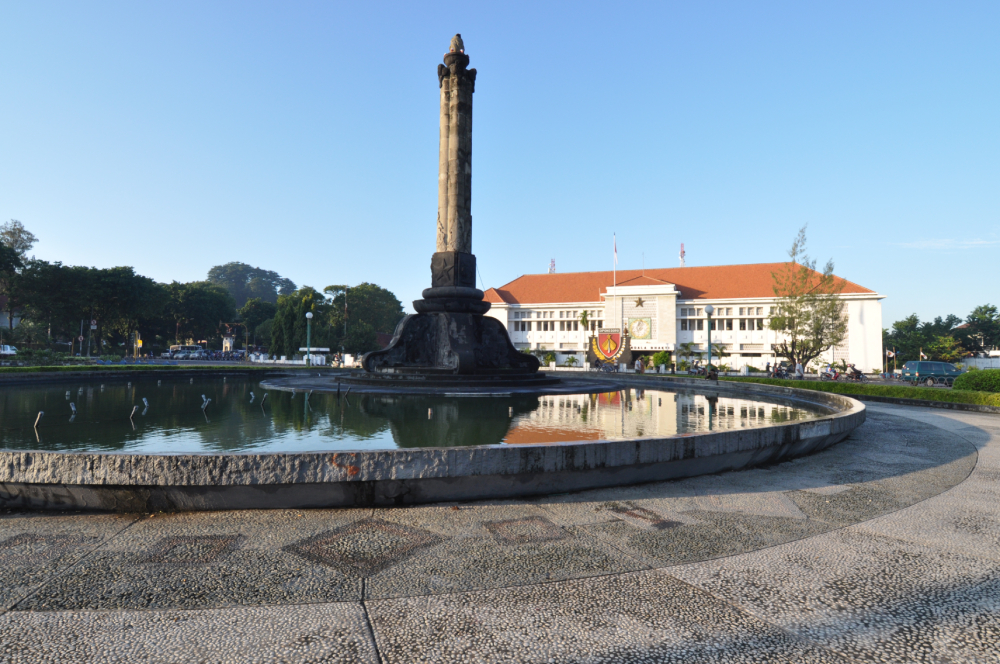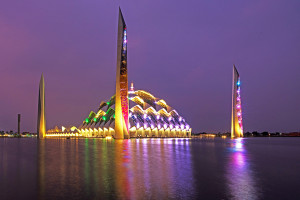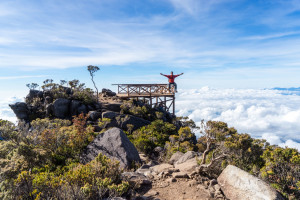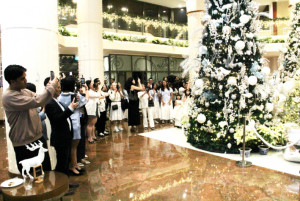Surprisingly, in my fourteen years in Indonesia, I had never once visited the city of Semarang. A frequent visitor to Yogyakarta, Semarang’s more illustrious sister city in Central Java, I decided that the time had come to finally take Semarang seriously and uncover its charms. And charms it certainly has aplenty, with its unique blend of traditional Javanese culture mixed with ethnic-Chinese influences, together with some of the most interesting Dutch colonial architecture in Indonesia.
It is sometimes easy to forget that Semarang is in fact the provincial capital of Central Java, as it is often overshadowed by Yogyakarta — Indonesia’s cultural capital and seat of the Sultan of Yogyakarta — which forms its own special province within the boundaries of Central Java. Nonetheless, Semarang is Indonesia’s fifth-largest city, with a population of some 1.5 million, and a wealth of history going back to the ninth century.
What makes Semarang so interesting are the syncretic layers of history and cultural influences that give the city its unique character. First called Bergota, the city developed into an important port and trading station, one visited by the famous Chinese eunuch Admiral Cheng Ho in 1405.
By the end of the fifteenth century the city was controlled by a Javanese sultan called Kyai Pandan Arang, a devote Muslim, who developed the city into a center of Islamic leaning. Later, with the era of colonialism, the city was occupied by the Dutch East India Company (VOC) in 1678 as part of the settlement of a debt owed by the Sultan of Mataram to the VOC.
A little later, the Dutch took over full control of the city and developed it into a major colonial trading center. Two centuries later in the 1920s, as resistance against the Dutch colonialists grew, Semarang became a hotbed of Indonesian nationalism and communism, and even became known as the “Red City” when the Indonesian Communist Party (PKI) was founded in the city.
So, with all this history awaiting me, I decided to catch up with a friend of mine in Semarang and tour the city with her on the back of her motorbike. After arriving late on Friday evening, bright and early one Saturday morning we headed for the old Dutch town center, known as Outstadt. At the heart of Outstadt is a Dutch church built in 1753, called Gereja Blenduk (blenduk means domed in bahasa Indonesia, which is the shape of the roof), where services are still held every Sunday.

Photo : Makhfud Sappe/LIONMAG
Unfortunately, the church is locked the rest of the week, so we had to return on Sunday morning to be able to look around inside. The area around Gereja Blenduk was the main port and commercial area during the Dutch period, with its unique rambling colonial architecture amongst some of the most impressive to be found anywhere in Indonesia.
Now protected by the local government, most of the historical buildings have yet to be renovated, which gives the whole neighborhood the air of a crumbling equatorial Amsterdam. Old warehouses and fading Dutch-era houses form a backdrop to everyday Javanese life, as locals wait for buyers for their prize fighting cocks in the narrow streets opposite the church. Another side road serves as a bemo terminal where practitioners of massage line the pavement, offering their services for all kinds of ailments from aching joints to full-blown strokes — all in full public view.
few blocks to the south of the aging Dutch city center, through the bustling streets of the Arab quarter, is Semarang’s Chinatown. Not far from the river that borders the edge of Chinatown is the stunning Tay Kak Sie Temple on Gang Lombok, which dates from 1722. Don’t miss the magnificent dragons on the roof of the temple. One of Indonesia’s finest Chinese temples, Tay Kak Sie is testament to Semarang’s status as Indonesia’s most ethnically Chinese city.
Perhaps because the ethnic-Chinese have a bigger role in the local community, Semarang seems to have resolved some of the simmering social tensions that affect other towns and cities across the archipelago.
Locals told me with evident pride that the riots that has swept across Indonesia in May 1998 and were largely targeted at the ethnic-Chinese had left Semarang entirely untouched. The sacks of high-quality rice destined for the poor that fill the corners of the temple may offer a partial explanation.
Another indication were the preparations for a Muslim prayer gathering in the open space in front of the temple when I paid my visit: this was a joint event by the ethnic-Chinese and Nahdlatul Ulama, the largest Muslim organization in Indonesia, to gather together to pray for the health of former president Abdurrahman Wahid, or “Gus Dur” as he is better known in Indonesia. Such an unusual event reflects the strong bonds between the two communities in Semarang, where Gus Dur is highly regarded by the ethnic-Chinese for revoking discriminatory government regulations dating from the Soeharto regime that prevented them from freely following their religious rites.
Next page : Semarang













